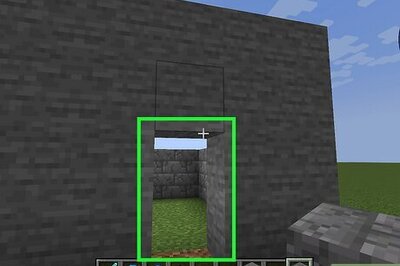
views
New Delhi: The initial public offer of real estate giant DLF Ltd, which is seeking to raise up to Rs 9,625 crore, has received bids for 1.96 times of the total issue size at the end of the third day of the issue.
According to the information available with bourses, the issue received about 12 crore additional bids on Wednesday, taking the total to bids for about 34.33 crore shares as against 17.5
crore equity shares on offer.
The IPO, which will close Thursday, comprises of 10.27 per cent of the post-issue capital of the company. The price band has been fixed at Rs 500-550 a share.
According to the charts available with stock exchanges, maximum number of bids were received at the lower end of the price band.
If the issue gets priced at the upper end of the price band, the company could find place among the country's ten most valued firms with a market capitalisation of over $20 billion.
Huge Low Cost Land Bank
DLF has a land bank of around 10,255 acres, constituting about 574 mn sq.ft. of saleable area covering residential, commercial and retail developments. Considering the low acquisition costs of land of around Rs.175-180 per sq.ft. (First Global estimates) and the entire land stocks to be used for the next 10 years, DLF enjoy a major competitive advantage as well as a cushion against land price inflation. The balance due in respect of these lands stood at Rs.44 bn, as of April 30, 2007.
Key Risks
Uncertainty of land reserves
As of April 30, 2007 the company and its subsidiaries own 1,160 acres (11.3 per cent) of the total land bank of 10,255 acres. The company directly owns only 0.5 per cent while the balance 10.8 per cent is held by the subsidiaries. The remaining 9,095 acres of land reserves are subject to agreements to purchase, development rights agreements or MoUs for acquisition. So risk is inherent in these executory contracts as sellers of land often withdraw from MoUs and sale agreements if land prices go up, resulting in disputes of uncertain outcome.
Availability of real estate financing
The RBI recently issued a notification prohibiting real estate companies from raising funds through the ECB route for developing integrated townships, while revising the interest rate limits for those who are allowed to tap the foreign markets. Moreover, the government proposes to treat FII investments in pre- IPOs of real estate companies at par with FDI with a lock-in period of 3 years in line with the prevailing FDI norms. This step might keep the foreign investors at bay.
PAGE_BREAK
Additionally, the government is reviewing norms for investments by foreign VCs in real estate. DLF already has outstanding debt of Rs.100 bn and land payments due of Rs.44 bn. as of March 31, 2007. Considering the capital intensive nature of the real estate industry, any unfavourable change in government policies could impact the availability of finance for real estate development.
Downside risk in execution plan
DLF’s plans appear huge in comparison to its earlier developments. The company plans to make available for sale or lease 149.7 mn sq.ft. for FY07-09, while its cumulative developments, excluding plots, as of April 30, 2007, was merely 29 mn sq.ft. We view DLF’s development schedule as aggressive and carrying considerable execution risk.
Cyclical nature of the Indian real estate industry
The real estate industry is cyclical in nature, which might impact realization in property values and rental income over a period of time. The situation could become worse if property prices decline and property inventory also becomes illiquid over extended periods of time.
Investment Rationale
We have valued DLF real estate business using the NPV approach based on the company’s land bank and development estimates by discounting the project’s cash flows, plus other miscellaneous realizations of other assets on the balance sheet as reduced by the liabilities. We have not included 554 acres of land (entered into a MoU between Dec 1, 2006 and Feb 28, 2007) due to lack of further information for valuation purpose.
As per our calculations, the NPV of DLF’s business works out to Rs.413 per share, after factoring in the best-case assumption including its power business (55MW plant), which has been valued at Rs 2.2 bn. At the price band of Rs.500-550, the stock is at a premium of 21-33 per cent to the NPV. In comparison, Unitech, which has a similar large land bank (10,332 acres), currently trades at Rs.560, while its NPV works out to around Rs.560-575 per share. As compared to this, a majority of the global real estate stocks in Hong Kong and Singapore trades at a 10-30 per cent discount to their NPV.
The sensitivity valuation shows that an increase of 1 per cent in sales realization will lead to an increase of approximately 1.4 per cent in the NPV per share and vice-versa. Similarly, an increase of 1 per cent in construction cost will lead to a decline of 0.5 per cent in the NPV per share and vice-versa.
All said and done, DLF appears to be a steeply priced issue. It may work. But that probability is low.
With inputs from moneycontrol.com

















Comments
0 comment